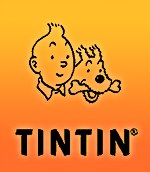Just for kicks:
 Checkmate – I am saddened—nay, crushed—that Greg Rucka is leaving what has to be the best spy story in recent comics history. The characters actually behave and speak like adults, the plots twist and turn vertiginously—I am constantly surprised, delighted, and entertained by this book. Top of the pile every month. Enjoy it while it lasts.
Checkmate – I am saddened—nay, crushed—that Greg Rucka is leaving what has to be the best spy story in recent comics history. The characters actually behave and speak like adults, the plots twist and turn vertiginously—I am constantly surprised, delighted, and entertained by this book. Top of the pile every month. Enjoy it while it lasts.Justice Society of America – Geoff Johns, Alex Ross, and Dale Eaglesham continue to explore the legacy theme with a tenderness and reverence for their subject matter that verges on the religious. Some people will hate that, but I’m grateful that there is a book like this on the stands. The world they've created has the same intricacy, believability, and depth that the Wolfman/Perez New Teen Titans had back in the day.
Green Lantern – At this point, does anyone need convincing? The Sinestro Corps War was the best sequel to the original Crisis on Infinite Earths that DC has published, and the book shows no signs of slowing down. The “teaser trailer” for Darkest Night gave me the kind of anticipatory tingles I haven’t had since I was a teenager.
 Suicide Squad – If DC is going to inflict a Bruce Jones-penned Checkmate on us after Rucka leaves (why?), the least they can do is put Ostrander back on a Suicide Squad ongoing. The current series has everything (love the Windfall/Sister Twister relationship—inspired!). I heard a rumor that DC might forego reprinting the original series in Showcase Presents B&W editions (as originally announced) in favor of full color trades. Wouldn’t that be nice?
Suicide Squad – If DC is going to inflict a Bruce Jones-penned Checkmate on us after Rucka leaves (why?), the least they can do is put Ostrander back on a Suicide Squad ongoing. The current series has everything (love the Windfall/Sister Twister relationship—inspired!). I heard a rumor that DC might forego reprinting the original series in Showcase Presents B&W editions (as originally announced) in favor of full color trades. Wouldn’t that be nice?Booster Gold – Another Johns book, I know. But what can I say? This is just the most fun you’re going to have for three dollars. Plus, it’s made me rediscover the awesomeness of Dan Jurgens, who, thanks to this, has finally redeemed himself for that hideous reinvention of the Teen Titans in the late nineties.
 Batman and the Outsiders – This is a great, great relaunch. Thank you, Chuck Dixon!! It manages to do what so few relaunches of beloved books ever manage: it stays absolutely true to the premise, tone, and feel of the original, while not seeming at all old-fashioned. (There is a scene in issue 3 where Rex, Brion, Tatsu, and Jeff have a mini-reunion that could have been written by Mike W. Barr. Again, thank you Chuck Dixon!) The “new” Outsiders all work wonderfully and the art by Julian Lopez is stunning.
Batman and the Outsiders – This is a great, great relaunch. Thank you, Chuck Dixon!! It manages to do what so few relaunches of beloved books ever manage: it stays absolutely true to the premise, tone, and feel of the original, while not seeming at all old-fashioned. (There is a scene in issue 3 where Rex, Brion, Tatsu, and Jeff have a mini-reunion that could have been written by Mike W. Barr. Again, thank you Chuck Dixon!) The “new” Outsiders all work wonderfully and the art by Julian Lopez is stunning.Wonder Woman – With only one storyline under her belt, Gail Simone has already proven that Diana’s adventures are in the very best of hands. Although I wasn’t as bothered by the group effort on the art as some, I’m looking forward to Aaron Lopresti’s run. Consistency is always a plus.
Nightwing – After a blabbery first issue, Peter Tomasi has begun to get his scripting under control, and I like it. Plus, Rags on art and a storyline that seems to be positioning Nightwing at the center of the Bat-universe? You’re spoiling us!
 The Legion of Superheroes – The answer is yes, isn’t it?
The Legion of Superheroes – The answer is yes, isn’t it?The Brave and the Bold – I probably shouldn’t have dropped this, but I was so annoyed with that stupid Supergirl issue that I had to take a break. Jerry Ordway’s upcoming tenure also tempts me.











